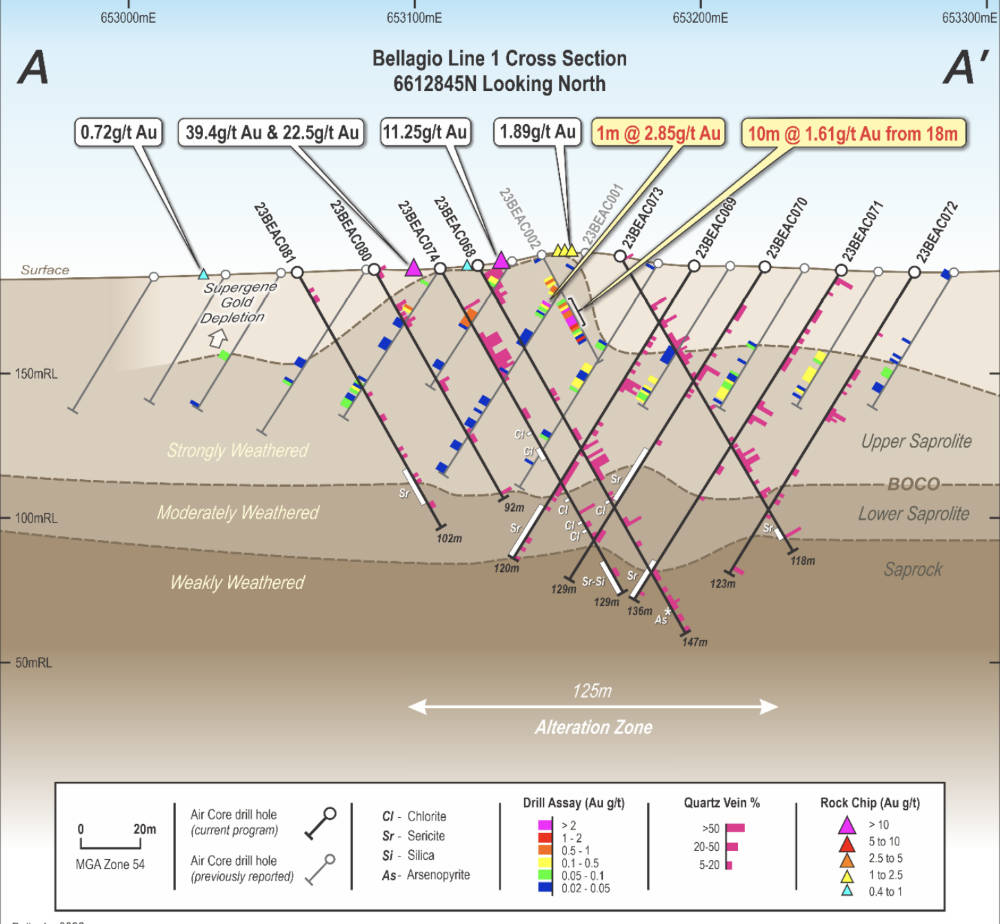‘A discovery opportunity’: With visible gold in Air Core drilling, has Koonenberry unearthed a potential new orogenic gold system in northern NSW?

Koonenberry’s Phase II Air Core drilling at Bellagio has returned features typical of an orogenic gold system. Pic via Getty Images
- Drilling at Koonenberry Gold’s Bellagio prospect has intersected visible gold in drill chips
- The gold is associated with Quartz veins and sericite-silica hydrothermal alteration, which are a common feature of orogenic gold systems
- Additional drilling planned to test the controlling 20km Royal Oak Fault structure that has seen no systematic exploration
Special Report: Phase II Air Core drilling has encountered visible gold and widespread alteration at Koonenberry Gold’s Bellagio prospect, with quartz veins encountered down-dip of a Phase I gold intersection of 10m at 1.61g/t.
Bellagio is a key target within Koonenberry Gold’s (ASX:KNB) namesake project, which covers 2,060km2 within the Koonenberry Belt – an emerging exploration district in northwest New South Wales with enormous gold and copper potential.
The project is believed to host an extension of Victoria’s Stawell Zone, which has produced more than 5Moz of gold since the 1850s, a belief backed by the geological evidence provided by early exploration such as rock chip sampling and first-pass drilling.
First pass drilling at the project had previously defined widespread gold mineralisation over a 250m by 300m zone that remained open in all directions.
KNB noted in November that most of the anomalous gold results occurred towards the bottom of hole with strong evidence of gold leaching and supergene depletion in the highly weathered zone.
Weathering processes are believed to under-representing results in the upper saprolite. The grades, widths and continuity of mineralisation may also be significantly better in the fresh rock below.
Bellagio a ‘discovery opportunity’
The company has now uncovered early signs it is on the money with the Phase II drilling, which was designed to test below the base of complete oxidation, intersecting visible gold as well as widespread quartz veins below the strongly weathered zone.

Fresh rock was not intersected in this program due to the limitations of Air Core drilling, nor was an attempt made to close off the previously identified 300m by 250m zone of mineralisation.
Adding further interest, these veins are associated with sericite-silica hydrothermal alteration and trace arsenopyrite over a +125m wide zone.
This is significant as sericite-silica alteration is a common feature of many orogenic gold systems.
“The company is very excited about the discovery opportunity at Bellagio,” KNB managing director Dan Power said.
“To see visible gold in quartz veins in Air Core drilling is extremely rare in my experience and therefore extremely exciting.
“We now eagerly await assay results from this second phase of drilling which are anticipated around mid-January.
“Additional drilling will be planned following receipt of these results as well as along the 20km long Royal Oak Fault that is understood to control the gold mineralisation at Bellagio and has seen no systematic exploration.”
This article was developed in collaboration with Koonenberry Gold, a Stockhead advertiser at the time of publishing.
This article does not constitute financial product advice. You should consider obtaining independent advice before making any financial decisions.
Related Topics

UNLOCK INSIGHTS
Discover the untold stories of emerging ASX stocks.
Daily news and expert analysis, it's free to subscribe.
By proceeding, you confirm you understand that we handle personal information in accordance with our Privacy Policy.








